Ask the Bones Read online
Page 9
That was too much even for a prankster like Jorge. He vowed that if anyone were to jump ship, it would be Ding Dong. Jorge knew that neither his tattoos nor the snake in his new glass eye had driven Ding Dong away.
So Jorge went ashore at the very next port to look for something more powerful. And that was where he found an artist who was a magician with molten glass.
This glassblower had made ghost ships with sails like cobwebs. He’d made glass islands that looked like monsters’ hands ready to drag sailors into the depths of the sea. But most astounding of all were his glass eyes.
They sat on the shelf, side by side, looking at Jorge as intently as he looked at them. But Jorge didn’t want any of the ready-made ones with ravens and rats in their centers. So he told the glassblower what he needed and sat down to wait.
The glassblower lit a flame, heated the glass and blew, creating the evilest of evil eyes, layer by layer. Rings of green and purple and black encircled a little red spot in the middle. And that red spot seemed to stick out, making even the glassblower shudder. He cooled the eye and handed it to Jorge. “Never take it out and stare at it,” he said. “Just wear it all the time.”
Jorge paid him and rushed back to the ship. He saw Ding Dong aloft, splicing a ratline, so he climbed up the rigging himself. Then he stared at him, face to face, eye to eye.
Ding Dong nearly went mad, but he couldn’t turn away. The evil eye seemed to hold him in its spell. He stared back, horrified, and then fell silently to the deck below.
Now either that evil eye scared Ding Dong into falling and he died from the fall, or that evil eye killed him outright. Jorge needed to know which. He hadn’t planned to kill him.
The captain and the crew thought it was an accident, and Jorge didn’t change their minds, but he couldn’t sleep and he couldn’t eat. He had to know if his glass eye really had that much power.
So he went down to the galley to ask the cook if he could borrow his mirror. Then he climbed up into the crow’s nest at the top of the mast, the only place on the ship where he could be alone.
He held the mirror in front of his face and stared directly into his evil eye.
Some say that a monster wave hit the ship just then and that’s why Jorge fell onto the deck and died. The glassblower said that it wasn’t the fault of the wave at all. But there’s only one person who can tell you for sure. And that’s the man who bought poor Jorge’s eye, years later, from the secondhand shop where his mates sold it.
And that man with the evil eye is walking around here somewhere—right now!
Beware!
Sources
THE HAUNTED FOREST
From Folk Tales of Central Asia, by Amina Shah (London: The Octagon Press, 1970), pp. 109-17.
THE MURKY SECRET
From The Doctor to the Dead: Grotesque Legends and Folk Tales of Old Charleston, by John Bennett (Columbia: University of South Carolina Press, 1946), pp. 223-31.
NEXT-OF-KIN
From Spanish Legendary Tales, by S. G. C. Middlemore (1885), reprinted in Folk Tales of All Nations, edited by F. H. Lee (New York: Coward-McCann, Inc., 1930), pp. 895-902.
THE BLOODY FANGS
From Japanese Fairy Tales, by Lafcadio Hearn and others (New York: Boni and Liveright, 1918), pp. 29-35.
ASK THE BONES
From A Mountain of Gems: Fairy Tales of the Peoples of the Soviet Land, translated by Irina Zheleznova (Moscow: Raduga Publishers, 1962), pp. 184-87.
THE FOUR-FOOTED HORROR
From Ghosts Along the Cumberland: Deathlore in the Kentucky Foothills, by William Lynwood Montell (Knoxville: University of Tennessee Press, 1975), pp. 166-67.
BEGINNING WITH THE EARS
From the Israel Folktale Archives, no. 8335, collected by Moshe Rabi from Hannah Hadad. A variant is IFA 3380, collected by Yakov Zemertov from his mother, Juliet, of Iraq. Previously unpublished.
FIDDLING WITH FIRE
From A Treasury of American Folklore: Stories, Ballads, and Traditions of the People, edited by B. A. Botkin (New York: Crown Publishers, 1944), pp. 727-31. A variant is found in A Treasury of Southern Folklore: Stories, Ballads, Traditions, and Folkways of the People of the South edited by B. A. Botkin. (New York: Crown Publishers, 1949), pp. 538-40.
THE LAPLANDER’S DRUM
From Demonologia; or, Natural Knowledge Revealed; Being an Exposé of Ancient and Modern Superstitions, by I. S. F. (London: John Bumpus, 1827), pp. 338-55, 381.
A NIGHT OF TERROR
From Ha-Sippur ha-Hasidi (The Hasidic Story), by Joseph Dan (Jerusalem: Keter, 1975), pp. 229-35.
NOWHERE TO HIDE
From Folk Tales From Russia, translated by Olga Shartse (Moscow: Raduga Publishers, 1990), pp. 146-53. A variant is found in Georgian Folk-Tales by M. Wardrop, reprinted in Folk Tales of All Nations, edited by F. H. Lee (New York: Coward-McCann, Inc., 1930), pp. 493-96.
THE HANDKERCHIEF
From Folktales of China edited by Wolfram Eberhard (Chicago: University of Chicago Press, 1965), pp. 131-33.
THE MOUSETRAP
From Icelandic Folktales and Legends by Jacqueline Simpson (Berkeley and Los Angeles: University of California Press, 1972), pp. 169-70.
THE SPEAKING HEAD
From Pe‘er Mi-Qedoshim (The Glory of the Holy Ones) (Lvov: 1864). Also found in Anshei Ma’aseh (The People of the Story).
THE DRIPPING CUTLASS
From Gumbo Ya-Ya: A Collection of Louisiana Folk Tales, compiled by Lyle Saxon, Edward Dreyer, and Robert Tallant (Boston: Houghton Mifflin, 1945), pp. 275-76.
THE BLACK SNAKE
From Otsar ha-Ma‘asiyyot (A Treasury of Tales), Volume 5, edited by Reuven ben Ya’akov Na’ana (Jerusalem: 1961).
THE HAND OF DEATH
From Of the Night Wind’s Telling: Legends from the Valley of Mexico, by E. Adams Davis (Norman: University of Oklahoma Press, 1946), pp. 201-6.
THE INVISIBLE GUEST
From The Fairy Mythology, Illustrative of the Romance and Superstition of Various Countries, by Thomas Keightley (London: George Bell & Sons, 1878), pp. 240-57.
A TRACE OF BLOOD
From Mules and Men, by Zora Neale Hurston (Philadelphia: J.P Lippincott Company, 1935), pp. 290-92.
THE BRIDAL GOWN
From Semitic Magic: Its Origins and Development, by R. Campbell Thompson (London: Luzac & Co., 1908), pp. 71-72.
THE GREEDY MAN AND THE GOAT
From Russian Fairy Tales, collected by Aleksandr Afanas’ev, translated by Norbert Guterman (New York: Pantheon Books, 1945), pp. 550-52.
THE EVIL EYE
From A Treasury of New England Folklore: Stories, Ballads, and Traditions of the Yankee People edited by B. A. Botkin (New York: Crown Publishers, 1947), pp. 421-23. Reprinted from Liverpool Jarge, Yarns, by Halliday Witherspoon (Boston: Square Rigger Company, 1933), Yarn 10. Also from A Sailor’s Treasury: Being the Myths and Superstitions, Legends, Lore and Yarns, Cries, Epithets, and Salty Speech of the American Sailormen in the Days of Oak and Canvas, by Frank Shay (New York: W. W. Norton & Company, Inc., 1951).
Arielle North Olson is the author of three picture books. She reviewed picture books for the St. Louis Post Dispatch for twenty-six years.
Howard Schwartz, a noted folklorist, is the author of over twenty books for readers of all ages. He has won the Aesop Award of the American Folklore Society.
David Linn has illustrated three scary story collections, because, he says, “There simply isn’t enough terror in my life!” His oil paintings have been widely exhibited.
div>

 Astounding Stories, March, 1931
Astounding Stories, March, 1931 Astounding Stories, February, 1931
Astounding Stories, February, 1931 Futuria Fantasia, Spring 1940
Futuria Fantasia, Spring 1940 The King's Daughter and Other Stories for Girls
The King's Daughter and Other Stories for Girls Uncanny Tales
Uncanny Tales Masters of Noir: Volume Two
Masters of Noir: Volume Two Witty Pieces by Witty People
Witty Pieces by Witty People Sylvaneth
Sylvaneth Space Wolves
Space Wolves Hammerhal & Other Stories
Hammerhal & Other Stories The Fantasy Fan, March, 1934
The Fantasy Fan, March, 1934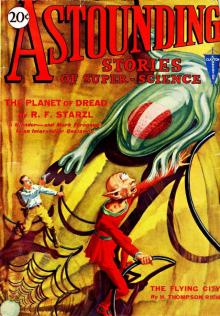 Astounding Stories of Super-Science, August 1930
Astounding Stories of Super-Science, August 1930 Astounding Stories, August, 1931
Astounding Stories, August, 1931 The Burden of Loyalty
The Burden of Loyalty Return to Wonderland
Return to Wonderland Anthology - A Thousand Doors
Anthology - A Thousand Doors The Fantasy Fan, October 1933
The Fantasy Fan, October 1933 Astounding Stories, June, 1931
Astounding Stories, June, 1931 Southern Stories
Southern Stories Astounding Stories of Super-Science, May, 1930
Astounding Stories of Super-Science, May, 1930 The Fantasy Fan December 1933
The Fantasy Fan December 1933 Adventures in Many Lands
Adventures in Many Lands The Fantasy Fan February 1934
The Fantasy Fan February 1934 The Fantasy Fan November 1933
The Fantasy Fan November 1933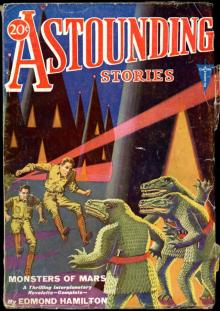 Astounding Stories, April, 1931
Astounding Stories, April, 1931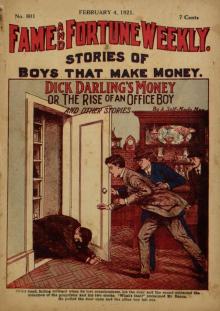 Fame and Fortune Weekly, No. 801, February 4, 1921
Fame and Fortune Weekly, No. 801, February 4, 1921 Astounding Stories of Super-Science, November, 1930
Astounding Stories of Super-Science, November, 1930 Astounding Stories of Super-Science January 1931
Astounding Stories of Super-Science January 1931 A Monk of Fife
A Monk of Fife Astounding Stories of Super-Science September 1930
Astounding Stories of Super-Science September 1930 Astounding Stories of Super-Science July 1930
Astounding Stories of Super-Science July 1930 Astounding Stories of Super-Science, June, 1930
Astounding Stories of Super-Science, June, 1930 Astounding Stories of Super-Science, October, 1930
Astounding Stories of Super-Science, October, 1930 Astounding Stories of Super-Science, March 1930
Astounding Stories of Super-Science, March 1930 The Fantasy Fan January 1934
The Fantasy Fan January 1934 The Fantasy Fan September 1933
The Fantasy Fan September 1933 Astounding Stories of Super-Science February 1930
Astounding Stories of Super-Science February 1930 Astounding Stories, May, 1931
Astounding Stories, May, 1931 Strange Stories of Colonial Days
Strange Stories of Colonial Days Golden Age of Science Fiction Vol IX
Golden Age of Science Fiction Vol IX Astounding Stories of Super-Science, December 1930
Astounding Stories of Super-Science, December 1930 Evolutions: Essential Tales of the Halo Universe
Evolutions: Essential Tales of the Halo Universe Good Stories Reprinted from the Ladies' Home Journal of Philadelphia
Good Stories Reprinted from the Ladies' Home Journal of Philadelphia Dragons!
Dragons!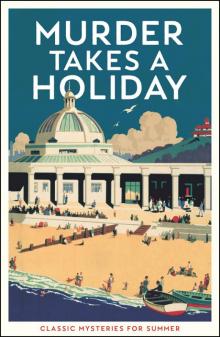 Murder Takes a Holiday
Murder Takes a Holiday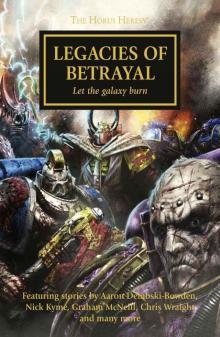 Legacies of Betrayal
Legacies of Betrayal STAR WARS: TALES FROM THE CLONE WARS
STAR WARS: TALES FROM THE CLONE WARS Strange New Worlds 2016
Strange New Worlds 2016 Lippincott's Magazine, August, 1885
Lippincott's Magazine, August, 1885 Golden Age of Science Fiction Vol X
Golden Age of Science Fiction Vol X Hot Stuff
Hot Stuff Santa Wore Spurs
Santa Wore Spurs Paranormal Erotica
Paranormal Erotica Tangled Hearts: A Menage Collection
Tangled Hearts: A Menage Collection Sweet Tea and Jesus Shoes
Sweet Tea and Jesus Shoes The Journey Prize Stories 25
The Journey Prize Stories 25 Wild Western Tales 2: 101 Classic Western Stories Vol. 2 (Civitas Library Classics)
Wild Western Tales 2: 101 Classic Western Stories Vol. 2 (Civitas Library Classics) (5/15) The Golden Age of Science Fiction Volume V: An Anthology of 50 Short Stories
(5/15) The Golden Age of Science Fiction Volume V: An Anthology of 50 Short Stories (4/15) The Golden Age of Science Fiction Volume IV: An Anthology of 50 Short Stories
(4/15) The Golden Age of Science Fiction Volume IV: An Anthology of 50 Short Stories Ten Journeys
Ten Journeys The Boss
The Boss The Penguin Book of French Poetry
The Penguin Book of French Poetry Golden Age of Science Fiction Vol VIII
Golden Age of Science Fiction Vol VIII His Cinderella Housekeeper 3-in-1
His Cinderella Housekeeper 3-in-1 The Magazine of Fantasy & Science Fiction - July/August 2016
The Magazine of Fantasy & Science Fiction - July/August 2016 PYRATE CTHULHU - Tales of the Cthulhu Mythos (vol.2)
PYRATE CTHULHU - Tales of the Cthulhu Mythos (vol.2) Tales from a Master's Notebook
Tales from a Master's Notebook April 1930
April 1930 New Erotica 6
New Erotica 6 Damocles
Damocles The Longest Night Vol. 1
The Longest Night Vol. 1 The Golden Age of Science Fiction Volume VI: An Anthology of 50 Short Stories
The Golden Age of Science Fiction Volume VI: An Anthology of 50 Short Stories (1/15) The Golden Age of Science Fiction: An Anthology of 50 Short Stories
(1/15) The Golden Age of Science Fiction: An Anthology of 50 Short Stories Eye of Terra
Eye of Terra ONCE UPON A REGENCY CHRISTMAS
ONCE UPON A REGENCY CHRISTMAS Nexus Confessions
Nexus Confessions Passionate Kisses
Passionate Kisses War Without End
War Without End Doctor Who: Time Lord Fairy Tales
Doctor Who: Time Lord Fairy Tales Gotrek and Felix: The Anthology
Gotrek and Felix: The Anthology WESTERN CHRISTMAS PROPOSALS
WESTERN CHRISTMAS PROPOSALS The Journey Prize Stories 27
The Journey Prize Stories 27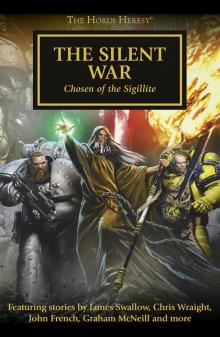 The Silent War
The Silent War Liaisons
Liaisons Ellora's Cavemen: Tales from the Temple IV
Ellora's Cavemen: Tales from the Temple IV Ellora's Cavemen: Tales from the Temple II
Ellora's Cavemen: Tales from the Temple II Some of the Best From Tor.com, 2013 Edition: A Tor.Com Original
Some of the Best From Tor.com, 2013 Edition: A Tor.Com Original Urban Occult
Urban Occult Fractures
Fractures The Stories: Five Years of Original Fiction on Tor.com
The Stories: Five Years of Original Fiction on Tor.com The Penguin Book of Modern British Short Stories
The Penguin Book of Modern British Short Stories Mortarch of Night
Mortarch of Night The Portable Nineteenth-Century African American Women Writers
The Portable Nineteenth-Century African American Women Writers The Golden Age of Science Fiction Volume VII: An Anthology of 50 Short Stories
The Golden Age of Science Fiction Volume VII: An Anthology of 50 Short Stories Holy Bible: King James Version, The
Holy Bible: King James Version, The Eight Rooms
Eight Rooms sanguineangels
sanguineangels DarkNightsWithaBillionaireBundle
DarkNightsWithaBillionaireBundle Casserole Diplomacy and Other Stories
Casserole Diplomacy and Other Stories How I Survived My Summer Vacation
How I Survived My Summer Vacation Alfred Hitchcock Presents: 16 Skeletons From My Closet
Alfred Hitchcock Presents: 16 Skeletons From My Closet Lords, Ladies, Butlers and Maids
Lords, Ladies, Butlers and Maids The B4 Leg
The B4 Leg Ellora's Cavemen: Tales from the Temple I
Ellora's Cavemen: Tales from the Temple I 2014 Campbellian Anthology
2014 Campbellian Anthology There Is Only War
There Is Only War Obsidian Alliances
Obsidian Alliances 12 Gifts for Christmas
12 Gifts for Christmas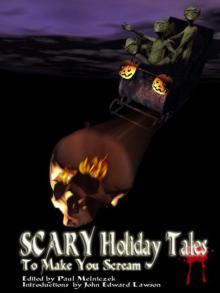 Scary Holiday Tales to Make You Scream
Scary Holiday Tales to Make You Scream 25 For 25
25 For 25 The Plagues of Orath
The Plagues of Orath And Then He Kissed Me
And Then He Kissed Me Star Trek - Gateways 7 - WHAT LAY BEYOND
Star Trek - Gateways 7 - WHAT LAY BEYOND Laugh Your Head Off Again and Again
Laugh Your Head Off Again and Again The Balfour Legacy
The Balfour Legacy Golden Age of Science Fiction Vol XI
Golden Age of Science Fiction Vol XI (3/15) The Golden Age of Science Fiction Volume III: An Anthology of 50 Short Stories
(3/15) The Golden Age of Science Fiction Volume III: An Anthology of 50 Short Stories Shas'o
Shas'o Astounding Science Fiction Stories: An Anthology of 350 Scifi Stories Volume 2 (Halcyon Classics)
Astounding Science Fiction Stories: An Anthology of 350 Scifi Stories Volume 2 (Halcyon Classics) Twists in Time
Twists in Time Meduson
Meduson The Magazine of Fantasy & Science Fiction - August 1980
The Magazine of Fantasy & Science Fiction - August 1980 The Journey Prize Stories 22
The Journey Prize Stories 22 The Book that Made Me
The Book that Made Me Angels of Death Anthology
Angels of Death Anthology Ask the Bones
Ask the Bones Emergence
Emergence Beware the Little White Rabbit
Beware the Little White Rabbit Xcite Delights Book 1
Xcite Delights Book 1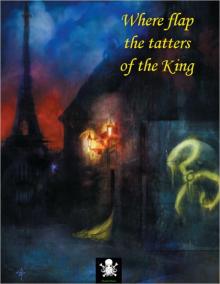 Where flap the tatters of the King
Where flap the tatters of the King The Journey Prize Stories 21
The Journey Prize Stories 21 Tales of the Slayer, Volume II
Tales of the Slayer, Volume II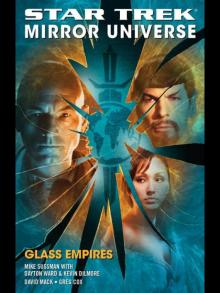 Glass Empires
Glass Empires Golden Age of Science Fiction Vol XII
Golden Age of Science Fiction Vol XII (2/15) The Golden Age of Science Fiction Volume II: An Anthology of 50 Short Stories
(2/15) The Golden Age of Science Fiction Volume II: An Anthology of 50 Short Stories Fairytale Collection
Fairytale Collection Angels!
Angels! Golden Age of Science Fiction Vol XIII
Golden Age of Science Fiction Vol XIII